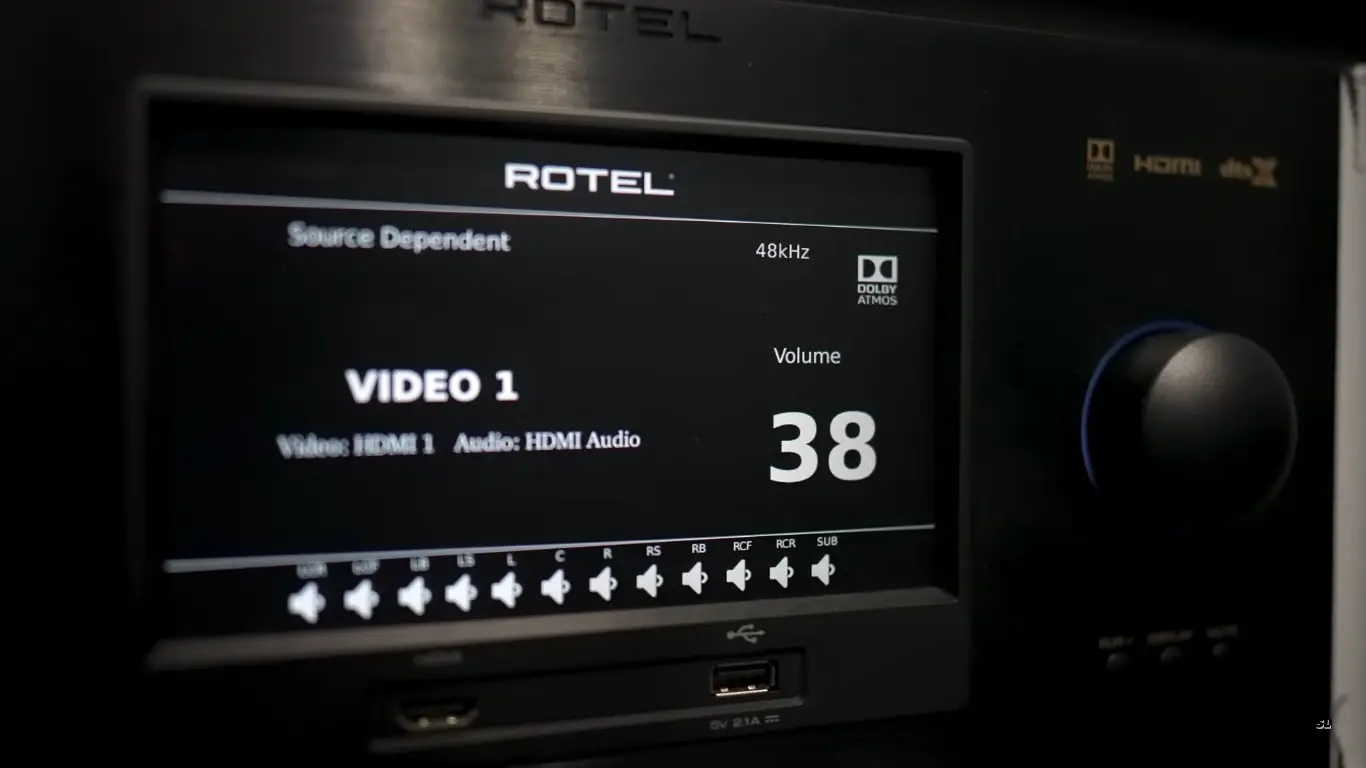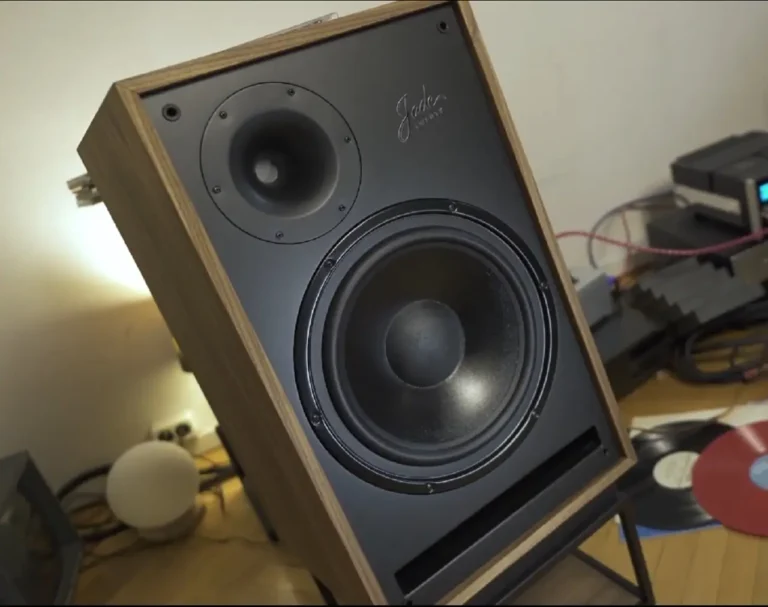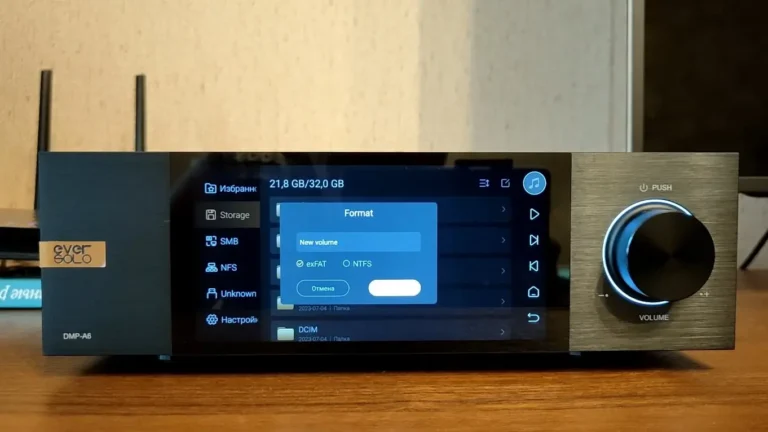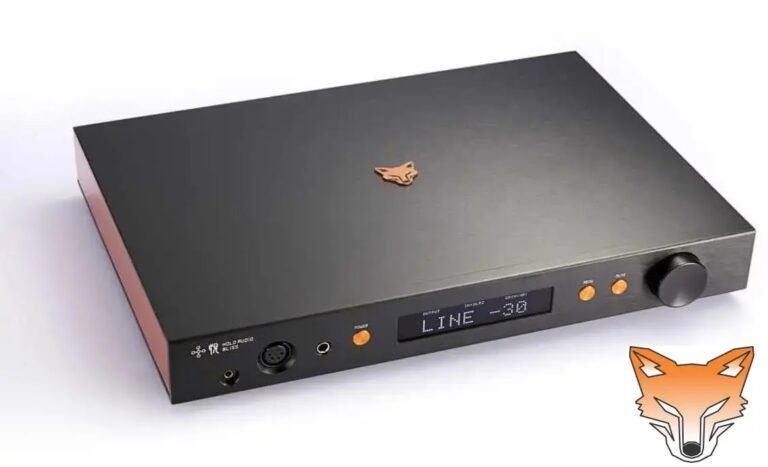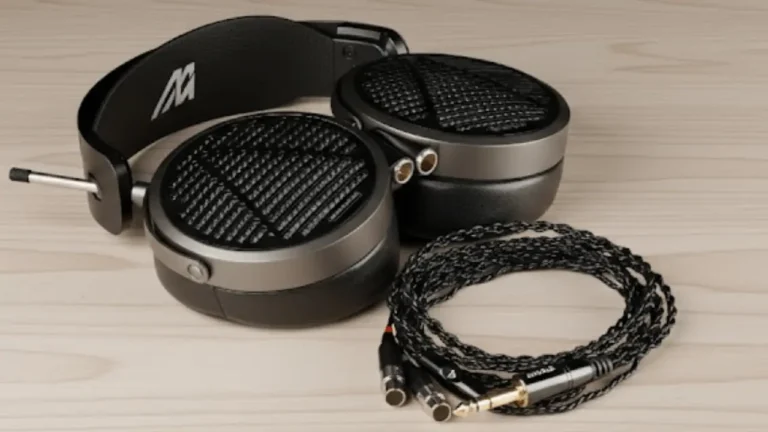Is a simpler, more powerful audio receiver actually the better choice? I tested the Rotel RAP-1580MKII to find out.
While most new audio receivers are filled with streaming apps and internet features, Rotel is focusing on what’s most important: the sound. The Rotel RAP-1580MKII is built with this simple goal. It’s a powerful amplifier designed to do one thing perfectly: create incredibly clear, powerful, and immersive sound. It omits the additional digital features that other brands incorporate, allowing you to enjoy pure, high-quality audio without any distractions.
Rotel has updated its flagship RAP-1580 amplifier processor to the MKII version, refining the room correction system and implementing several subtle cosmetic improvements in the software.
Both externally and conceptually, the device is practically indistinguishable from its predecessor. This is the same solid, substantial unit we’re familiar with, featuring a large, informative front-panel display. This screen proves incredibly convenient when you need to adjust settings without powering on your TV or projector.
Check Out: Cary Audio SI-300.2d DAC Amplifier Review
I must emphasize that this is a multi-channel amplifier processor, not an AV receiver. The company has decided that a classic tuner for listening to on-air radio broadcasts is an unnecessary feature for serious film and audio enthusiasts.
A Focus on Pure Performance: Design and Philosophy
You will not find popular features like internet streaming, multi-room, or other networking capabilities here. And don’t be fooled by the Ethernet connector on the rear panel—it’s strictly for service tasks.
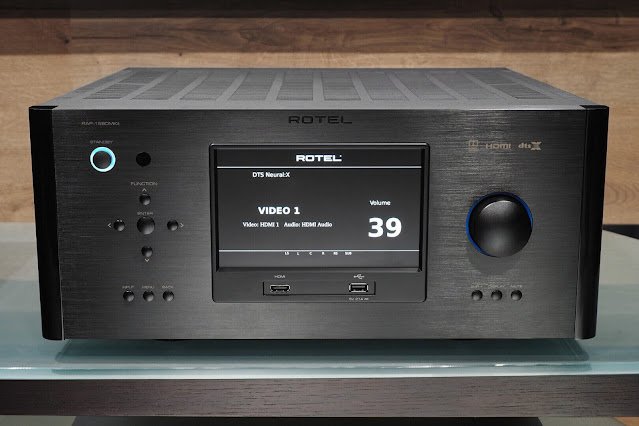
This is a conscious policy from Rotel. For the sake of ultimate sound quality, the company avoids overloading the device with additional electronic components that could introduce noise. This philosophy also prevents them from being tied down by legal and material obligations to network technology owners, which ultimately impacts the final cost of the device. Of the wireless functions, only Bluetooth with aptX is available.
The developers’ primary task was to create a universal device for both film lovers and audiophiles. It needed to confidently and plausibly reproduce every nuance of a film’s soundtrack without any dips in performance—be it thunderous explosions, whispers, the rustle of leaves, the clinking of glass, and, of course, the musical score.
For cinema, it offers a common 7.1.4 channel configuration with support for almost all current surround sound formats, including the essential Dolby Atmos and DTS: X.
Recall that with these object-based audio formats, sound isn’t pre-assigned to specific channels. Instead, its general vector is programmed (e.g., “source appears from the back left and moves to the front right”), and the processor then dynamically distributes the sound across your specific speaker configuration. Of course, traditional multi-channel recordings with various Dolby and DTS encodings are also fully supported.
Under the Hood: Power and Precision
To achieve its natural sound reproduction, the Rotel RAP-1580MKII utilizes six high-quality Wolfson WM8740 DACs. The built-in amplifier is powered by a hefty, custom-designed 1,100W toroidal transformer. In a multi-channel setup, it delivers a potent 140 watts per channel into 4 ohms and 100 watts per channel into 8 ohms.
Fans of traditional stereo are not forgotten. The company assures that the device’s capabilities are more than sufficient for playing various musical genres, even with demanding speakers, although it’s noted that cinema sound remains its primary focus. In a 2.0 channel stereo mode, the built-in amplifier provides an impressive 200 watts per channel with 4-ohm speakers and 135 watts with 8-ohm speakers.
Room Correction Perfected: The Power of Dirac Live
As befits an advanced multi-channel audio processor, the Rotel RAP-1580MKII supports a sophisticated room-based audio calibration system: Dirac Live. Named after the British physicist Paul Dirac, this system stands apart from its competitors.
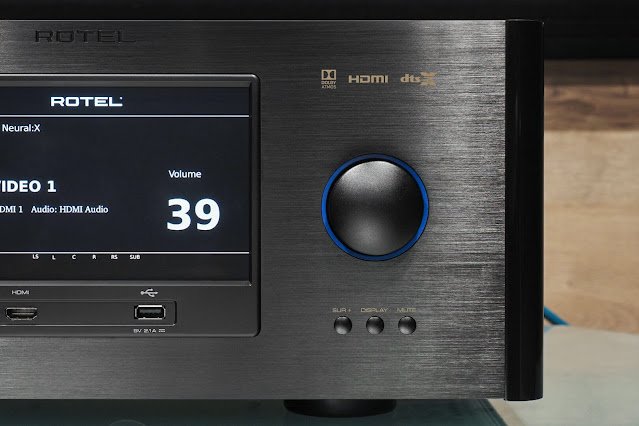
Dirac Live differentiates itself by adjusting the impulse response of the speakers, not just the frequency response. Furthermore, measurements are conducted not at a single point, but across the entire listening area (up to nine measurement points).
Also Read: PS Audio Stellar Strata Review
A USB microphone is included for sound measurements, but you will need a computer and the special software, which can be downloaded specifically for the Rotel RAP-1580MKII from the Dirac website. There is also a paid upgrade to Dirac Live Full Frequency for $99. This commercial version unlocks the full, uncut frequency range of 20–20,000 Hz for correction.
Due to time constraints, we couldn’t perform the full calibration on our freshly unboxed unit. However, based on the experience of technical consultants, in a dedicated, acoustically treated room of a regular shape, manually entering the speaker types and distances into the processor menu is often sufficient, with the difference compared to Dirac Live being insignificant.
But, if I were installing the RAP-1580MKII and a set of speakers in my own complex, U-shaped living room, adjusting the sound with Dirac Live would be essential. It would significantly improve the sound by delivering more accurate sound object localization, increasing the intelligibility of music and dialogue, and tightening up the bass response.
Comprehensive Connectivity for Any System
One look at the rear panel makes it clear that the developers were serious about switching capabilities. There are eight HDMI inputs and two HDMI outputs. Digital inputs are available on both coaxial and Toslink optical connectors, and there’s a USB-B port for connecting a computer. There are also plenty of analog ports, including a Phono MM input for turntables.
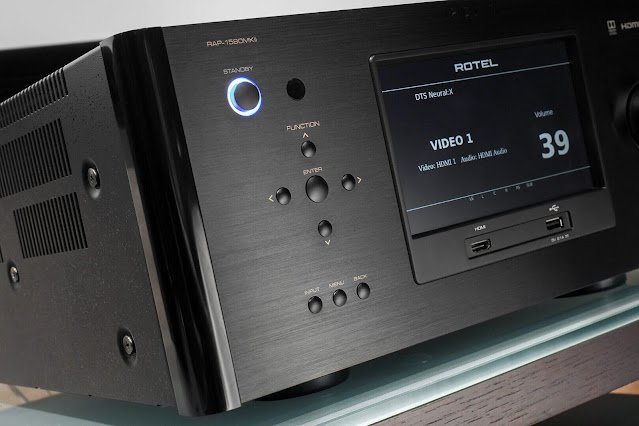
To provide a clear overview, we have detailed the connection options, I/O characteristics, and supported video/audio formats in the Rotel RAP-1580MKII Specifications below.
Test Setup: B&W 700 Series Speakers
As the saying goes, “The retinue makes the king,” and an amplifier processor truly shines with decent acoustics. For our test, we used B&W 702 S2 floorstanding speakers for the front channels. The matching B&W 703 S2 floorstanders handled the rear channels, a B&W HTM71 S2 served as the center, and a B&W DB4S active subwoofer anchored the low end.
Cinematic Performance: Natural, Dynamic, and Immersive Sound
Few people are surprised by multi-channel effects these days, so I will spare you the textbook descriptions of being in the middle of a shootout or a car chase; devices several times cheaper can demonstrate such things effectively. I’ll get straight to the point: what makes the RAP-1580MKII special with various movie sounds?
When reviewing other home cinema audio systems, I often notice a pronounced “genre character.” Some systems perfectly convey the massive, dense sound of action films, but sound unnatural and crude with the sounds of nature or light background music. Others, conversely, are very natural in everyday scenes but “sag” during intense battle episodes. Still others seem to handle different sounds adequately, but the presentation comes across as somewhat synthetic or “plastic.”
The Rotel RAP-1580MKII, paired with high-quality acoustics, is always natural. It excels whether in combat, at work, or at rest. It feels as if you could ask it to reproduce the chirping of a sparrow against the backdrop of anti-aircraft guns, and it would handle it perfectly.
Also Read: NAD C 316BEE V2 Review
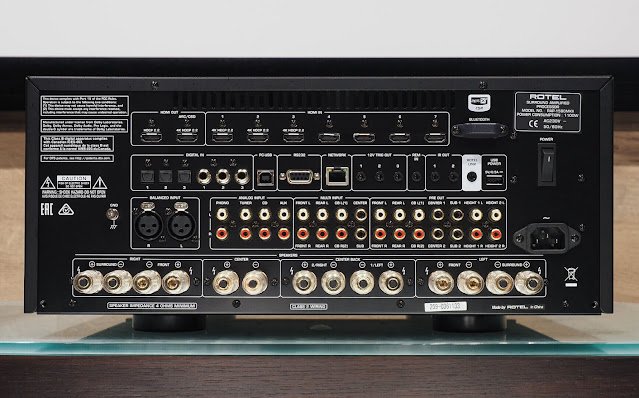
Its wide dynamic range is combined with a clear and distinct sound, which is especially noticeable in a complex soundscape—for example, a voice-over against the backdrop of a noisy music festival, or the sounds of nature breaking through the windows of a roaring car.
This is one of the key factors that make long movie-watching sessions comfortable. You no longer find yourself subconsciously analyzing the surround sound against the picture on the screen; instead, you perceive the soundtrack as something completely natural and self-evident.
Beyond the Big Screen: Musical Prowess in Stereo and Surround
As I don’t consider myself solely a cinephile, the declared musical abilities of the Rotel RAP-1580MKII interested me almost more than its cinematic ones. The creators claim their talents can reconcile the “movie watchers” and “music listeners” within a family, removing the need to buy a separate set of amplifiers.
You may like: Technics SU-G700 Amplifier Review
The analog stereo mode here can be truly purist. The signal bypasses all digital circuits—including bass management, volume, tone, and time delay controls. It goes only to the volume control and then directly to the connectors for the two front speakers. The subwoofer is not active in this mode.
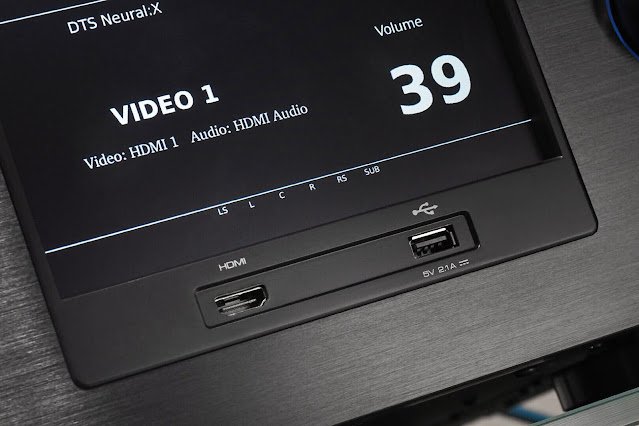
By ear, the result is excellent. The B&W 702 S2 floorstanders, in a manner familiar from numerous listening sessions, handle various genres conscientiously and effectively—without any failures, but also without any earth-shattering revelations. This is because I still had the three-dimensional picture from watching music videos in my head.
An inner voice began to whisper: Why do we have this excellent sound processor on board if not to use it? Can it digitize a two-channel analog signal and transform it into virtual surround sound? I switched on the DSP mode with the SUR+ button on the remote, and the soundscape transformed.
The digital brains began to arrange the performers according to their logic. For example, the vocalist was sent to the center channel, a piano solo was placed here, and maracas were added over there. The guitars and wind instruments were separated across the front speakers, the subwoofer handled all the low-end duties, and other elements were sent to the rear channels.
And you know what? It sounds fantastic! It may not align with the original intention of the performers and sound engineers, but the resulting sound is cohesive, musical, rich, and voluminous. Most importantly, it is completely free of the “digital taste”—that harsh or artificial quality that plagues many more affordable processors.
Instruments still sound incredibly natural and, if you will, “analog.” So I highly recommend that even the most orthodox audiophile not neglect these capabilities.
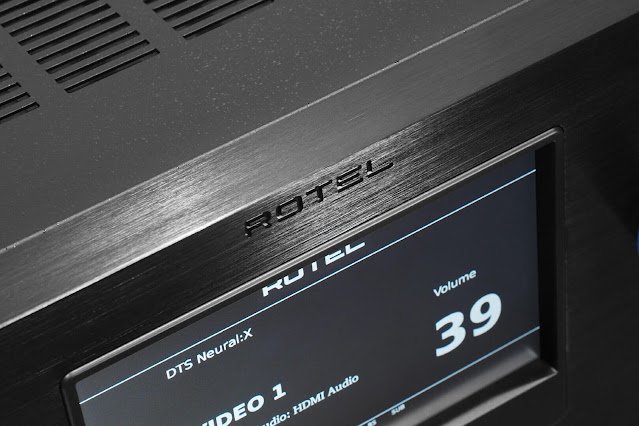
Verdict:
First and foremost, this device will appeal to avid moviegoers who demand high-quality, accurate, and powerful cinema sound. Here, the amplifier processor offers a wide range of connectivity, a natural and precise delivery, and plenty of headroom for virtually any movie genre.
However, supporters of traditional stereo will not feel left out. The Rotel RAP-1580MKII will provide them with a coherent, melodic, and confidently powerful sound, albeit without an extreme focus on refined analyticity and micro-detail. And for those who are not averse to experimenting with digital processing and surround sound upmixing, it will provide new and very interesting musical impressions.
Price For Rotel Rap-1580mkii
Starting at $4,499.37 at Audio Advisor
Pros And Cons For Rotel Rap-1580mkii
Pros:
- High-quality Class AB amplification for rich, musical sound.
- Support for Dolby Atmos and DTS:X for immersive home theater audio
- Dirac Live room correction for optimized sound in any room.
- Excellent connectivity, including balanced XLR inputs.
- High-end 32-bit/384kHz DACs for superior audio performance.
Cons:
- The user interface could feel dated compared to competitors.
- Some users may prefer Class D amplifiers due to their energy efficiency.
- No native Wi-Fi or streaming platform support is built in, aside from Bluetooth.
Rotel Rap-1580mkii Specifications
- Amplifier class: AB
- Number of channels: 7.1.4
- Output power: 1 kHz, THD <0.05%, 4 ohms – 200W (2 channels), 140W (7 channels); 1 kHz, THD <0.05%, 8 ohms – 135 W (2 channels), 20 Hz – 20 kHz, THD < 0.05%, 8 ohms – 100 W (7 channels)
- Frequency range: 10 Hz – 100 kHz (±1 dB, line input); 20 Hz – 20 kHz (±0.5 dB, digital input); 20 Hz – 20 kHz (±1 dB, phono input)
- Intermodulation distortion: <0.05% (60Hz: 7kHz, 4:1)
- Damping factor: 230 (1 kHz, 8 ohms)
- Input Sensitivity/Impedance: 300 mV/100 kΩ (line input), 3.85 mV/47 kΩ (Phono input), 600 mV/100 kΩ (balanced input)
- Signal-to-noise ratio: 100 dB (analog input), 96 dB (line input)
- Built-in decoders: LPCM (up to 24bit/192kHz), Dolby Atmos, Dolby Pro Logic, Dolby Digital Plus, DTS:X, DTS-HD High Resolution Audio, DTS-HD Express, Dolby TrueHD, DTS-HD Master Audio
- Preamp Output Level: 1.2V
- Auto-calibration system: Dirac Live (USB microphone included)
- Built-in DAC: 6 x Wolfson WM8740
- Bluetooth support: aptX
- Inputs: 8 x HDMI (3 with HDCP 2.2 support), line XLR, 3 x line RCA, Phono MM, 3 x coaxial, 3 x optical, USB port, 7.1ch
- Outputs: 2 x HDMI with HDCP 2.2 support, 12.2ch (Pre-Out)
- Video input/output resolution: 480i/576i, 480p/576p, 720p, 1080i, 1080p, 1080p 24Hz, 3D, 4K, UHD
- AC output: seven pairs of screw terminals
- Power supply: proprietary toroidal transformer
- Power consumption: 1100 W, standby 0.5 W
- Dimensions (WxHxD): 431x192x470 mm
- Weight: 22.8 kg
Want to update the firmware? You can visit Rotel’s website

